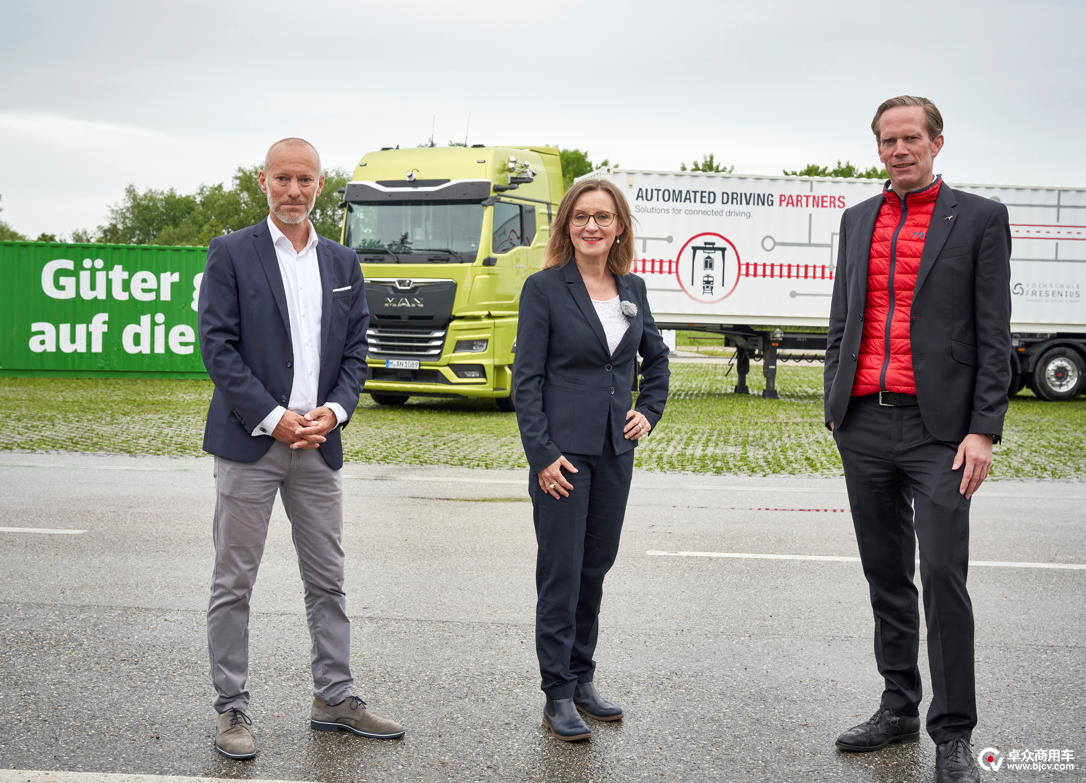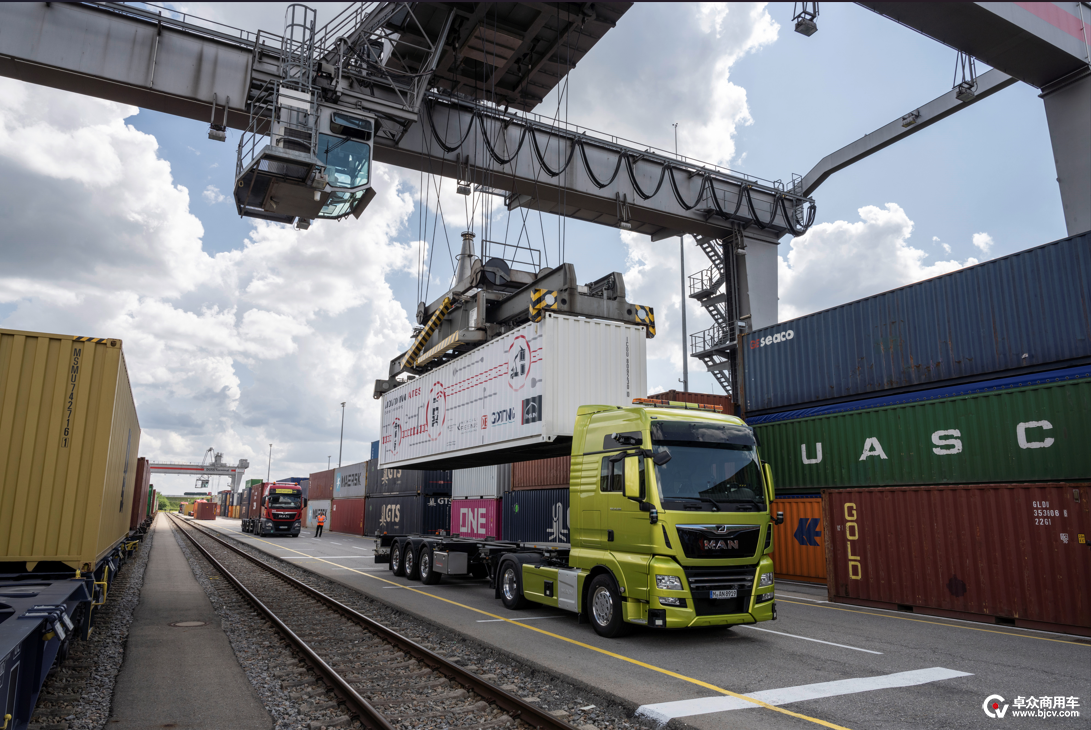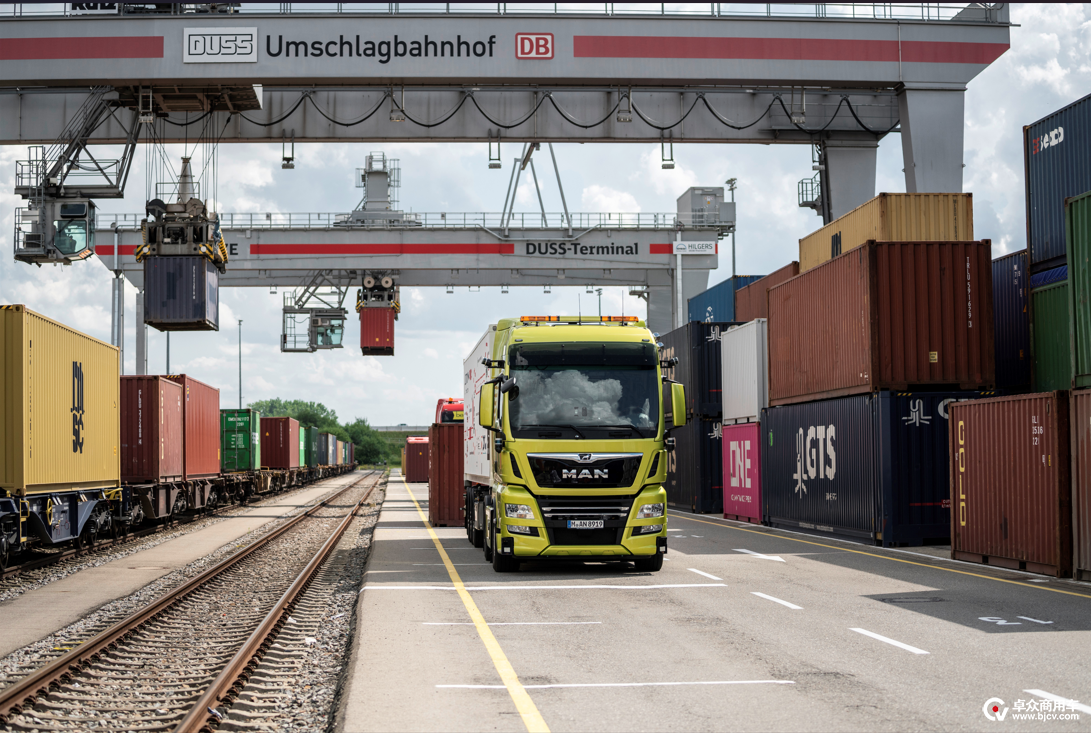
ANITA automation project by MAN Truck & Bus, Deutsche Bahn, Hochschule Fresenius University of Applied Sciences and Götting KG: Intensive practical and development runs at the DB Intermodal Services container depot and the DUSS terminal (Deutsche Umschlaggesellschaft Schiene-Straße mbH) in Ulm Dornstadt are the next step.
MAN Truck & Bus, Deutsche Bahn, Fresenius University of Applied Sciences, and Götting KG draw a positive mid-term balance in the joint automation project ANITA (Autonomous Innovation in Terminal Operations). With the first public drive of the autonomous truck driving system on the MAN test track in Munich, the partners presented what has been achieved so far and announced intensive practical and development drives at the container depot of DB Intermodal Services and the DUSS terminal (Deutsche Umschlaggesellschaft Schiene-Straße mbH) in Ulm Dornstadt as the next step. The aim of ANITA is to use autonomous trucks to stabilize the processes involved in transferring containers from road to rail, making them more efficient, easier to plan and at the same time more flexible. This will enable more goods to be transported in environmentally friendly combined transport in the future. To this end, MAN will be sharpening the electronic senses of the autonomous truck in the real operating environment over the coming months so that it can perceive the surroundings, react, and plan like a real driver.

At the presentation of the mid-term results of the ANITA project in Munich (from left to right): Prof. Dr Christian T. Haas from Fresenius University of Applied Sciences, Dr Sigrid Nikutta, Member of the Executive Board for Freight Transport at Deutsche Bahn AG and Chairwoman of the Executive Board of DB Cargo AG, and Dr Frederik Zohm, Member of the Executive Board for Research and Development at MAN Truck & Bus.
"The basic automation technology for ANITA is ready. For fine-tuning, we are now going into direct comparison with practice in order to further develop the system with a view to operational reliability and added value for the future user." said Dr. Frederik Zohm, Executive Board Member for Research and Development at MAN Truck & Bus, during the premiere drive. "We are consistently pursuing this approach in order to be able to offer autonomous trucks in terminal traffic as series technology from the end of the decade. Committed partners such as Deutsche Bahn, Götting KG and the Hochschule Fresenius University of Applied Sciences are essential in this."
The partners plan a full year of test drives to confront the autonomous prototype with reality as often as possible during the step-by-step development and optimization process. A safety driver is always on board to intervene if necessary. The intensive test drives benefit not only the further development of the autonomous truck but also the preparation of the terminals for the integration of the new technology: "Rail and road combined - that's the environmentally friendly solution for the logistics of the future. We are working together here to make these intermodal transports grow. Digitization and automation help us to make the interfaces to the freight train, the processes in the terminals simple and fast," says Dr. Sigrid Nikutta, Member of the Management Board of Deutsche Bahn AG responsible for Freight Transport and Chief Executive Officer of DB Cargo AG.

ANITA project in Ulm: Digitisation and automation make it possible to handle container transhipment from road to rail faster, more efficiently and more predictably.
For the autonomous truck to be able to perform its transport task in container handling, it must be able to communicate with the infrastructure of the DBIS depot and DUSS terminal. To this end, the scientists at Fresenius University of Applied Sciences analyzed the existing processes, procedures and behaviors of people and machines on site in the first phase of the project and transferred them to a digital set of rules. Deon Digital's Contract Specification Language (CSL) serves as a common language for the clear and complete communication of all systems involved. The result is a complete mission planning system that links both the vehicle and the IT systems of DBIS Depot and DUSS Terminal.
"We are pleased to see how our preliminary work can be successfully used in interaction with the truck in the further course of the ANITA project," emphasizes Prof. Dr. Christian T. Haas from Fresenius University of Applied Sciences. In the coming practical journeys, the scientists' mission planning transmits its orders to the automated truck and accompanies it through the container handling process.

Deutsche Bahn, MAN Truck & Bus, Hochschule Fresenius University of Applied Sciences and Götting KG are working on the digital future with the ANITA project: autonomous trucks will start practical testing at the DB IS container depot and the DUSS terminal in Ulm Dornstadt in the summer.
"During the practical tests in the terminal, we will learn more every day," says MAN project manager Amelie Jacquemart-Purson. "It requires high engineering skills - to merge the camera, lidar and radar data, interpret them and implement them correctly."
Specifically this means a lot of software development: During test drives, MAN will analyze the vehicle's behavior. These findings will then be implemented step by step via software updates. The autonomous system must be able to cover all the decisions that a driver makes today on the basis of his sensory impressions - this means nothing less than replacing human perceptions and actions.
The "Autonomous Innovation in Terminal Operations" (ANITA) project
started on July 1, 2020 with the aim of automating handling between modes
of transport and thus making it more flexible and efficient. It is being funded
with €5.5 million from the "New Vehicle and System Technologies" program
of the German Federal Ministry of Economics and Climate Protection. The
duration is 39 months.(the end)




发表评论
网友评论仅供其表达个人看法,并不代表商用汽车事业部立场。